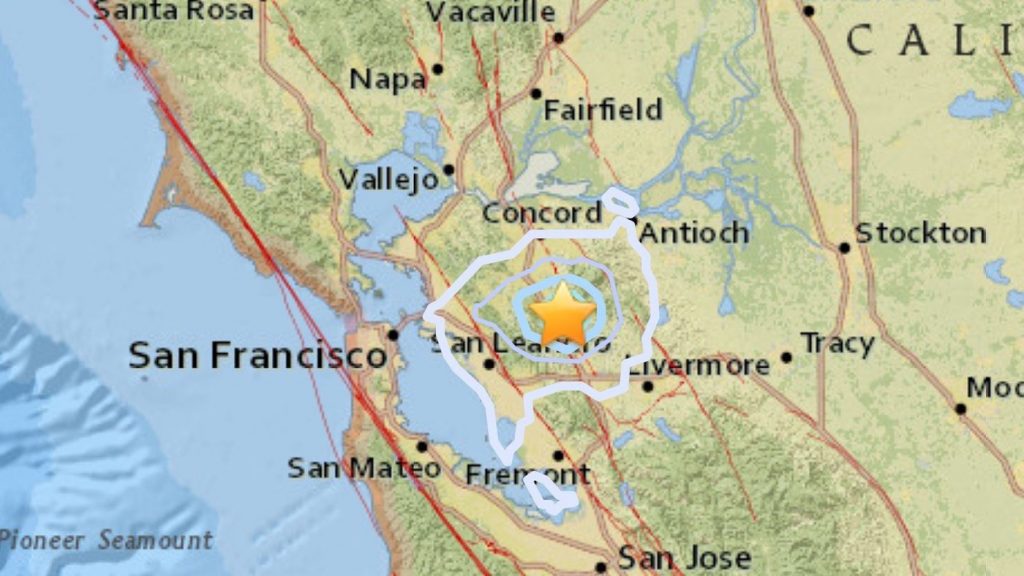Several magnitude 2 and 3 earthquakes rumbled through the San Francisco Bay Area on Friday. It’s the latest seismic activity to add to a swarm of 60 earthquakes greater than magnitude 1 to hit the Danville area in the past week. The largest in the sequence, a magnitude 3.6 earthquake, came at 12:19 p.m. Friday. The U.S. Geological Survey received reports from more than 1,000 people who said they felt the quake, extending from the East Bay and into San Francisco. The quake was quite shallow, less than a third of a mile under the surface of the earth. A magnitude 2.8 aftershock was felt two minutes later.
San Francisco has been shaken by a series of small earthquakes over 24 hours in California – the US state where a ‘Big One’ could happen at any moment. Friday’s seismic sequence began at 2:32 a.m., with a magnitude 2.7 temblor, followed by a magnitude 2.8 earthquake less than an hour later. A magnitude 3.3 earthquake hit at 5:28 a.m. The BART train service delayed trains after the magnitude 3 earthquakes Friday as a safety precaution.
Earthquake swarms like the one that began on Feb. 16 in the Danville area have been common over the past few decades, occurring in 1970, 1976, 1990, 2002, 2003 and 2015. They occur in the San Ramon Valley corridor along Interstate 680 between Walnut Creek and the Dublin and Pleasanton areas, said U.S. Geological Survey research geologist Belle Philibosian.
The Calaveras fault runs right along the San Ramon Valley. In the Danville area, the fault zone transitions and steps over to the Concord fault, which continues north into Concord, Philibosian said. There is a complex zone of small faults in this transition area.
While the San Andreas and Hayward faults are well known to many in the Bay Area for their seismic risk, the Calaveras and Concord faults also pose a substantial risk. The Calaveras fault is as long as the Hayward fault, for instance, and can produce a magnitude 7 earthquake, Philibosian said.
We should expect it to have large earthquakes in the future, such as a magnitude 6 or 7. Farther south, parts of the Hayward and Calaveras faults merge south of San Jose.

No comments:
Post a Comment